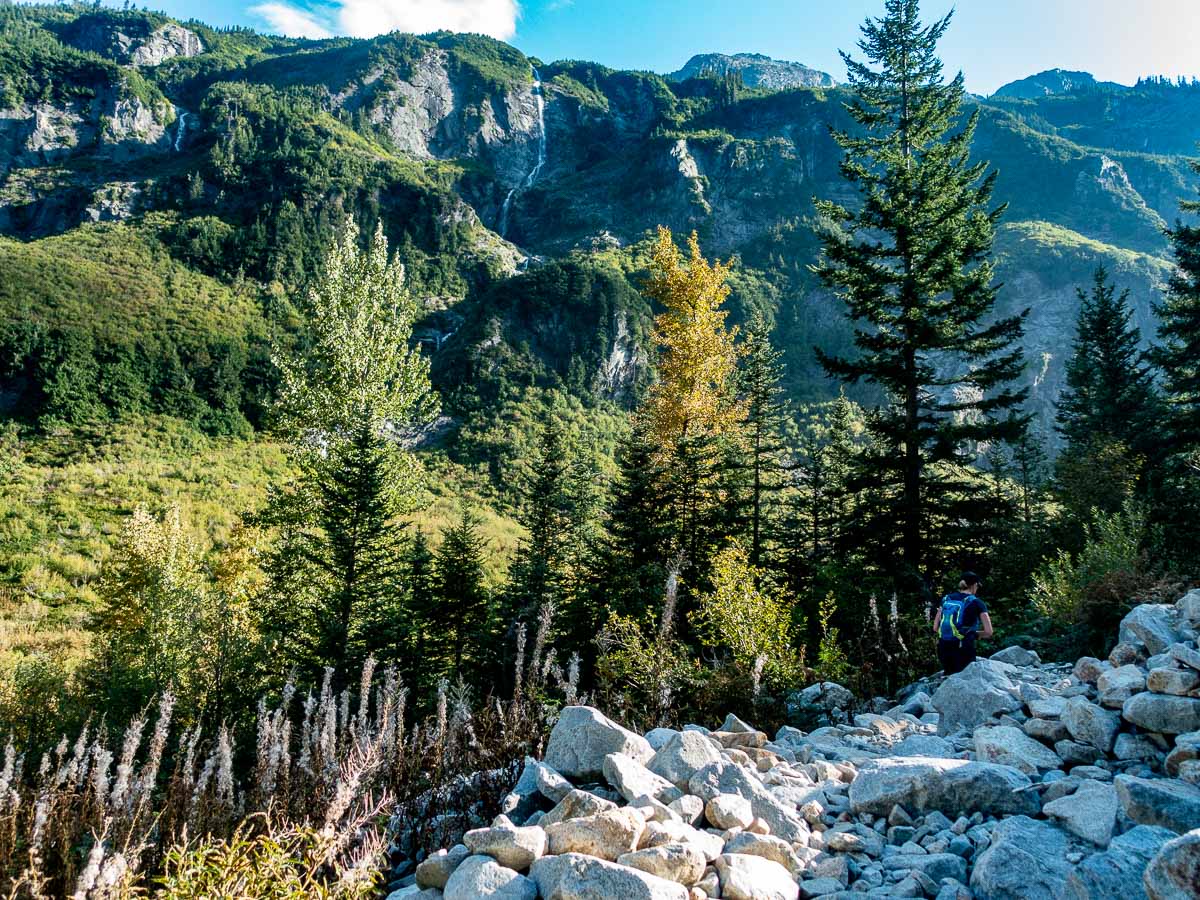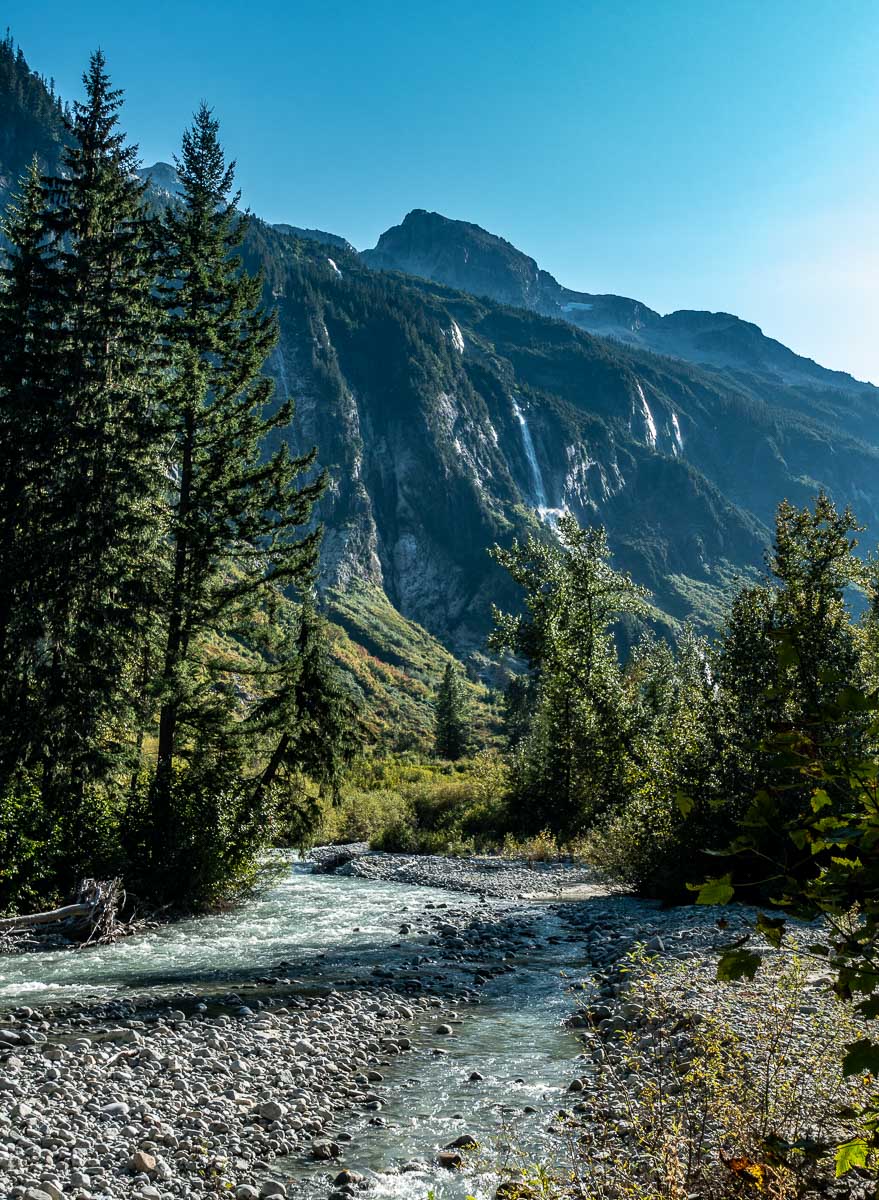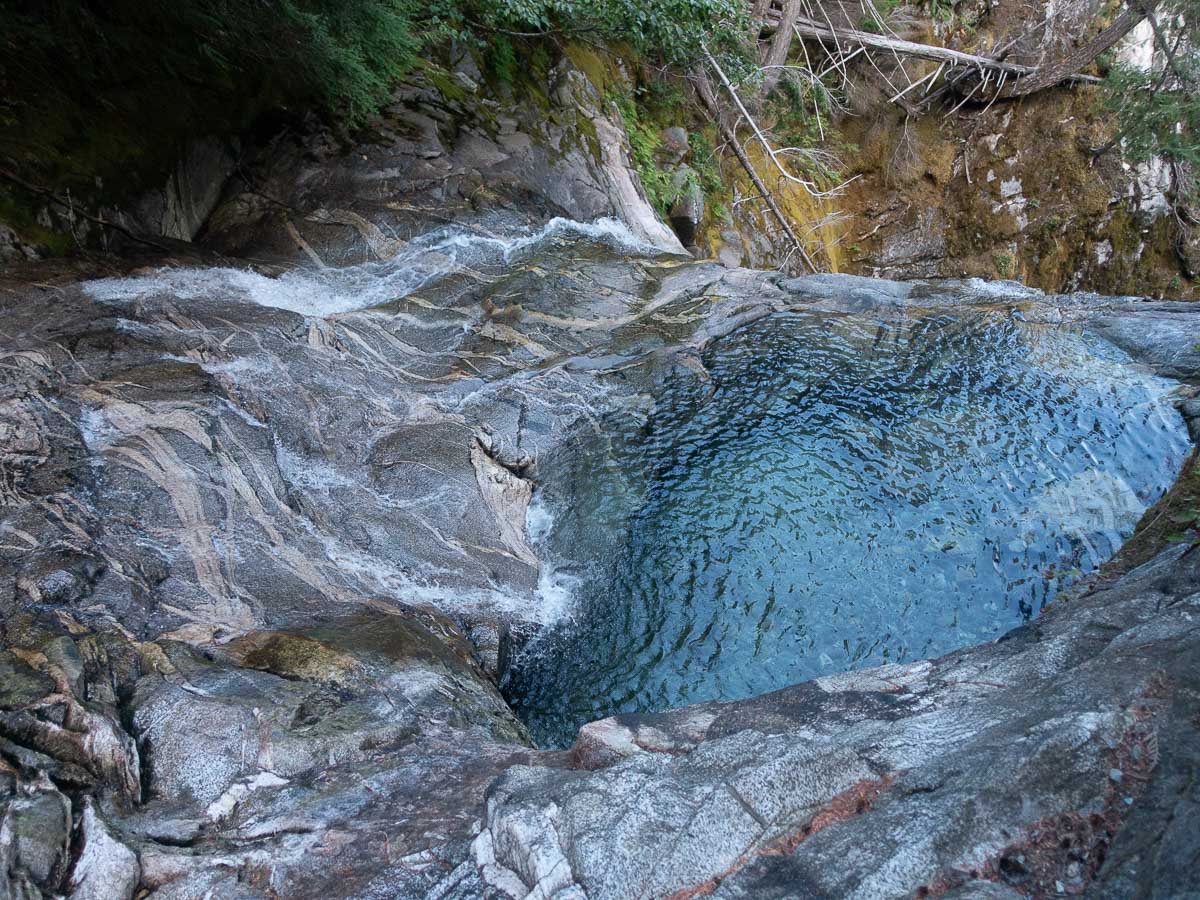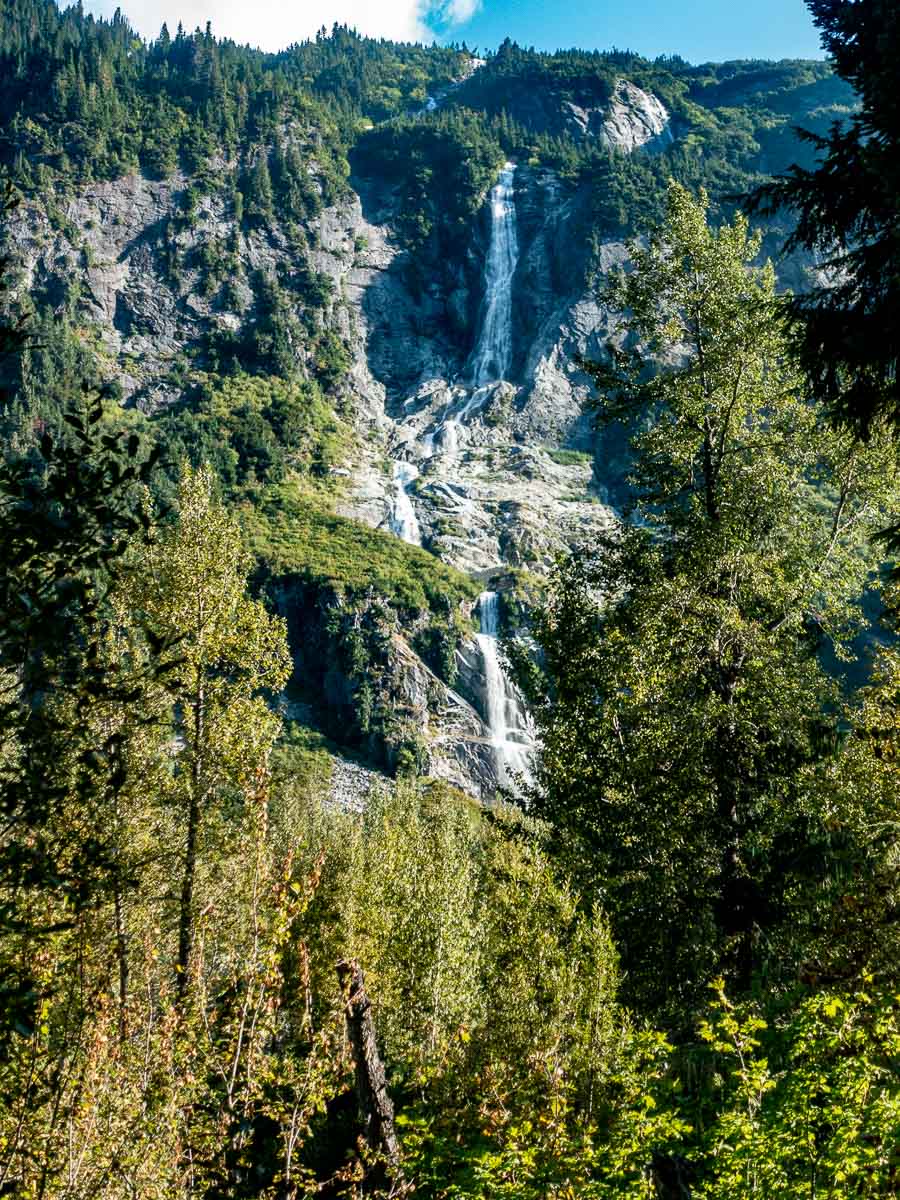
“The presence of a wild bear, the experience of a wild bear, sizzles through the nerves, jolts the heart, startles the brain; it strips away that filter that separates us from the world and allows us to become part of that world more completely.” – Sherry Simpson

Late afternoon on the Lake Chelan-Sawtooth Wilderness. Sweaty and sore, I’ve been out running all day. I’m hammering down an alpine meadow past a colorful ragout of wildflowers, thinking about the beef jerky and cooler of snacks in my car a few miles off, when something off in the not-so-distant brush moves.
Something big. I freeze.
My heart accelerates and my prehistoric instincts electrify. Could it be a bear? And if so, could it be a Grizzly?
The first time I came to these mountains, a quarter century ago, I was
struck by the wildness of the dense forest and glaciers, the sheer
dimensions of the steep peaks, the turquoise waters of the Skagit.
When I asked my friend, are there grizzlies here? she said, “Maybe. Probably. It’s complicated.”
Are there grizzlies in the North Cascades? Probably.
Could these mountains support a healthy Grizzly population? Definitely.
Biologists estimate that fewer than ten grizzly bears remain in the North Cascades, the most at-risk bear population in North America. The last documented Grizzly kill in the North Cascades was in 1967, and the last verified grizzly sighting in Washington’s Cascades was in 1996, with more recent sightings in the British Columbia portion of the ecosystem. A few years ago, a field biologist friend of mine spent several summers with a dozen other scientists looking for evidence of grizzlies, with no success (they did find hundreds of black bears).
When Lewis and Clark expeditioned to the Pacific in the early 1800s, there were at least 50,000 Grizzlies in the lower 48, but a century-and-a-half of settlement and development nearly eradicated grizzly bears from the US West, with fewer than a thousand left in 1975, when they were listed as an endangered species.
Since then, they have recovered slightly: between 1500 and 1800 grizzlies exist in the lower 48, primarily in the northern Rockies, with a few in the North Cascades.
The North Cascades Ecosystem is one of the wildest places in the Lower 48, with over six million acres of mostly public lands connected to wildlands in British Columbia, where Grizzlies are also rare.

Historically, the omnivorous (but primarily plant-based) big bears are an integral part of the ecosystem’s food chain and ecology, spreading seeds and turning over soil as they dig for roots. In recent decades, Grizzly recovery in these mountains has been a stop-start story. The US Fish & Wildlife Service added the North Cascades to its national Grizzly Bear Recovery Plan in 1997, but little action beside study was taken for nearly two decades. In 2014 a larger Grizzly recovery study was announced, only to be halted without explanation in 2017. A year later, in 2018, Secretary of the Interior Ryan Zinke announced support of Grizzly recovery, but that project was also halted a year later. The US Department of the Interior is currently deciding whether to import grizzly bears into the North Cascades, and will probably make an announcement sometime in 2020.
For several years, USFWS and the National Park Service have been considering possibilities for introducing up to 25 grizzlies or more in the North Cascades over the coming decade. Such reintroduction projects have the goal of establishing an eventual population of 200 in the coming 25-100 years. But bringing bears back is complicated. While surveys have shown that the majority of Washingtonians support Grizzly recovery, bears bring up passionate feelings and fears. Ranchers worry about their livestock. Loggers worry about government regulations. Homeowners worry about their pets and kids.

Environmentalists and hikers dream of a landscape with this cornerstone species. Grizzlies fascinate and scare us, and we project many of our fear and dreams onto these big, mysterious creatures. Outdoor Life editor Todd Smith has written, “Why does our fascination with grizzlies continue? Perhaps it’s because they remind us of that secret part of ourselves that longs to be something the grizzly bear has always been . . . indomitable, wild and free.”
Alaskan writer Kim Heacox reminds us that “We speak of that which is bearable and unbearable. In acts of restraint and abstinence we speak of forbearance. We engage in horseplay and monkey around, but from bears we borrow our most precious acts. We bear witness, bear our young, and bear glad tidings. We see in bears a little too much of ourselves and take that familiarity as a threat on one hand, a consolation on the other.” Bears, like wolves, rouse strong feelings and ideas, in people that say as much about us as the animals.
All of this passes through my mind as I’m standing here, alone in this steep meadow, eyes and ears and limbic system tuned to any sound, any movement, any possibility of a wild creature the size of a small car that is above me on the food chain. I’m reminded of the words of another Alaskan writer, Sherry Simpson: “The presence of a wild bear, the experience of a wild bear, sizzles through the nerves, jolts the heart, startles the brain; it strips away that filter that separates us from the world and allows us to
become part of that world more completely.”
I feel more alive, more present in this moment knowing that there could be a six-hundred pound mammal nearby. The possible consequences make time stand still in the same way that great art or meditation do. I’m more connected to something larger and older than myself. Indeed, the North
Cascades are a different place if there are Grizzlies here. I hope they are here, and that in the future, they can thrive in these jaw-dropping wild valleys, forests and drainages. It makes the ecosystem richer, the mountains wilder, the people more aware. It makes us more human.

Ian Ramsey is an ultrarunner, writer and educator based in Maine who has spent twenty five years exploring wild places in the Pacific Northwest and Alaska. He directs the Kauffmann Program for Environmental Writing and Wilderness Exploration, and guides running and kayak trips around North
America. For more information, go to www.ianramsey.net.
Check out our North Cascades trips:
North Cascades Traverse: Run North Cascades National Park from east to west
Stehekin: Run deep into the North Cascades to an idyllic valley set away from everything modern
Sawtooth Backcountry: explore the rugged Sawtooth-Chelan Wilderness in autumn, a women’s trip
Desolation Duo and Ross Lake Rally: early season gems, complete with fire lookouts and a boat ride up Ross Lake
